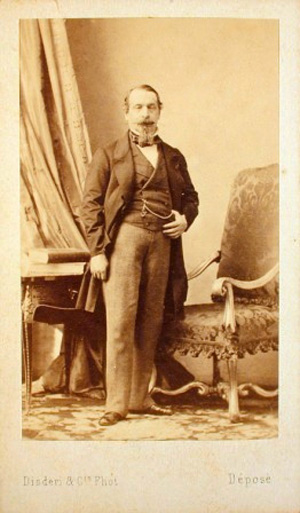
The Disderi CDV of Napoleon III 1859
|
The Carte de Visite
or CDV as collectors know themThis photographic format dates from the 1850sand lasted even into the time of postcards
Preface
This picture shows an enlarged view of the CDV which launched a collecting craze. It is the French ruler, Napoleon III, portrayed by Andre Disderi in 1859. Disderi had been producing such cards since 1854, but his portraits of royalty gave him his great successes.
Origins of the CDV
Various early photographers have claimed to invent the CDV. Its concept was based upon the earlier format of visiting cards which were printed and left at the homes of acquaintances to indicate that the caller had visited when the householder was not at home.
The website of the Bury St Edmunds Past and Present Society is in no doubt about the origin of the CDV, and states,
"The carte-de-visite is a type of photograph patented in Paris by the French photographer, Andre Adolphe Eugene Disderi in 1854. It was made of an albumen print, a thin paper photograph, mounted on thicker paper card measuring 64mmx100mm. Disderi had developed a method of producing multiple images on a single glass plate, and a format for mounting the images on small cards, making them relatively inexpensive to produce. He called them "cartes-de-visite", as they were small enough to be used as visiting cards. "
Cartes de visite consist of a print stuck to a card mount of about 4 ⅛" x 2 ½" in size. The prints were mostly albumen and, later, emulsion based printing-out-paper. Other processes, including carbon and Woodburytype, were also used.
|

